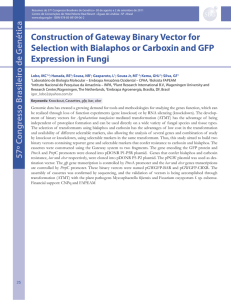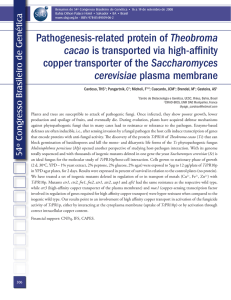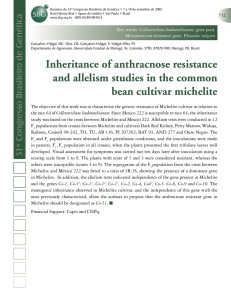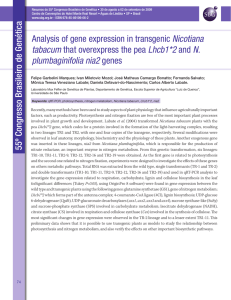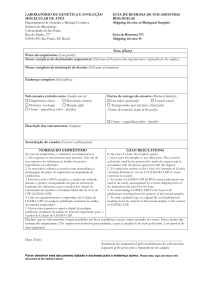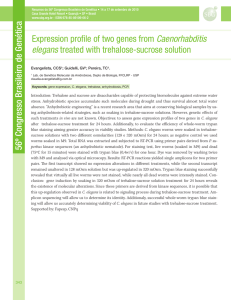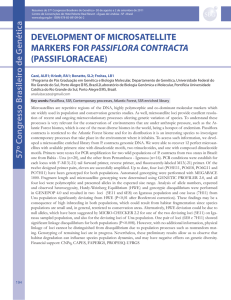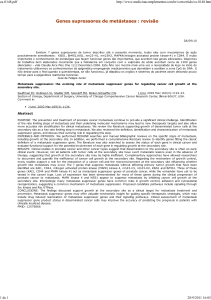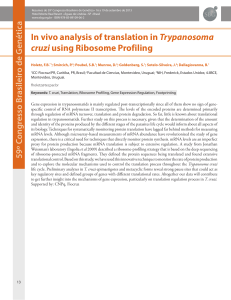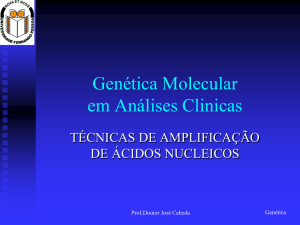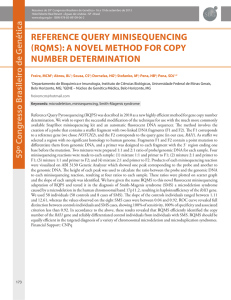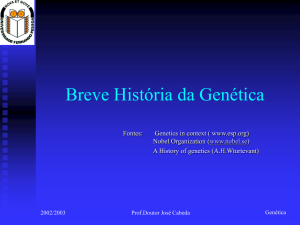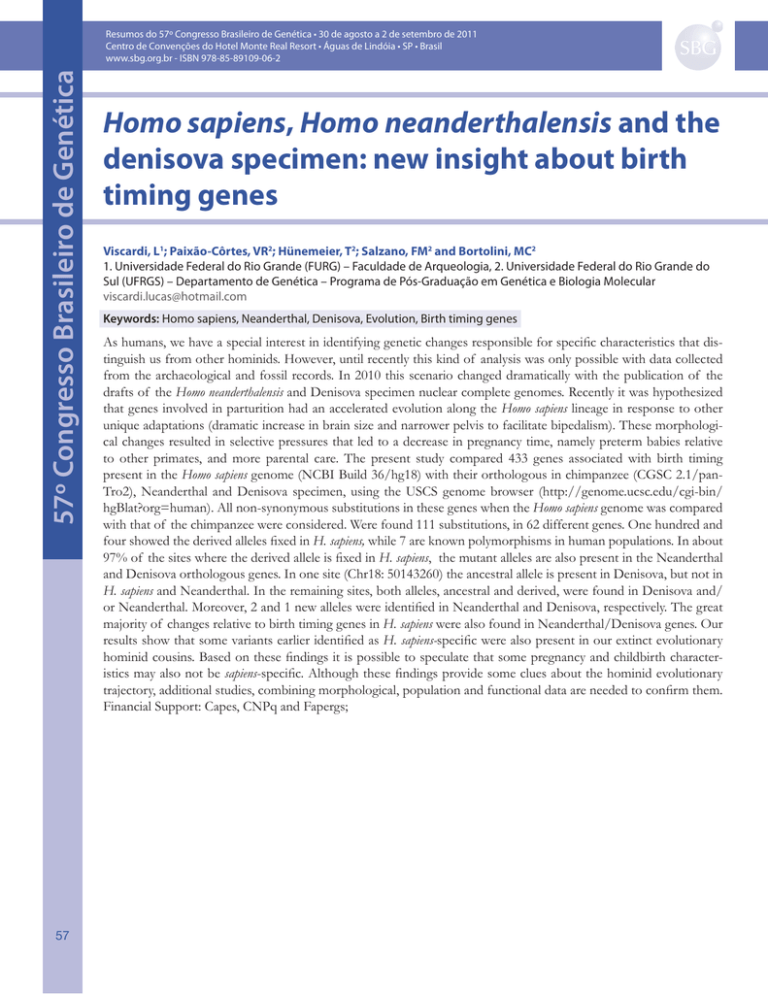
57º Congresso Brasileiro de Genética
Resumos do 57º Congresso Brasileiro de Genética • 30 de agosto a 2 de setembro de 2011
Centro de Convenções do Hotel Monte Real Resort • Águas de Lindóia • SP • Brasil
www.sbg.org.br - ISBN 978-85-89109-06-2
57
Homo sapiens, Homo neanderthalensis and the
denisova specimen: new insight about birth
timing genes
Viscardi, L1; Paixão-Côrtes, VR2; Hünemeier, T2; Salzano, FM2 and Bortolini, MC2
1. Universidade Federal do Rio Grande (FURG) – Faculdade de Arqueologia, 2. Universidade Federal do Rio Grande do
Sul (UFRGS) – Departamento de Genética – Programa de Pós-Graduação em Genética e Biologia Molecular
[email protected]
Keywords: Homo sapiens, Neanderthal, Denisova, Evolution, Birth timing genes
As humans, we have a special interest in identifying genetic changes responsible for specific characteristics that distinguish us from other hominids. However, until recently this kind of analysis was only possible with data collected
from the archaeological and fossil records. In 2010 this scenario changed dramatically with the publication of the
drafts of the Homo neanderthalensis and Denisova specimen nuclear complete genomes. Recently it was hypothesized
that genes involved in parturition had an accelerated evolution along the Homo sapiens lineage in response to other
unique adaptations (dramatic increase in brain size and narrower pelvis to facilitate bipedalism). These morphological changes resulted in selective pressures that led to a decrease in pregnancy time, namely preterm babies relative
to other primates, and more parental care. The present study compared 433 genes associated with birth timing
present in the Homo sapiens genome (NCBI Build 36/hg18) with their orthologous in chimpanzee (CGSC 2.1/panTro2), Neanderthal and Denisova specimen, using the USCS genome browser (http://genome.ucsc.edu/cgi-bin/
hgBlat?org=human). All non-synonymous substitutions in these genes when the Homo sapiens genome was compared
with that of the chimpanzee were considered. Were found 111 substitutions, in 62 different genes. One hundred and
four showed the derived alleles fixed in H. sapiens, while 7 are known polymorphisms in human populations. In about
97% of the sites where the derived allele is fixed in H. sapiens, the mutant alleles are also present in the Neanderthal
and Denisova orthologous genes. In one site (Chr18: 50143260) the ancestral allele is present in Denisova, but not in
H. sapiens and Neanderthal. In the remaining sites, both alleles, ancestral and derived, were found in Denisova and/
or Neanderthal. Moreover, 2 and 1 new alleles were identified in Neanderthal and Denisova, respectively. The great
majority of changes relative to birth timing genes in H. sapiens were also found in Neanderthal/Denisova genes. Our
results show that some variants earlier identified as H. sapiens-specific were also present in our extinct evolutionary
hominid cousins. Based on these findings it is possible to speculate that some pregnancy and childbirth characteristics may also not be sapiens-specific. Although these findings provide some clues about the hominid evolutionary
trajectory, additional studies, combining morphological, population and functional data are needed to confirm them.
Financial Support: Capes, CNPq and Fapergs;

